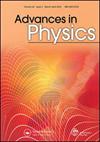结晶固体塑性流动中的尺度不变性
IF 13.8
1区 物理与天体物理
Q1 PHYSICS, CONDENSED MATTER
引用次数: 285
摘要
从连续塑性的传统观点来看,至少在没有所谓的塑性不稳定性的情况下,晶体固体的塑性变形被设想为一个光滑的准层流过程。然而,最近的理论和实验研究表明,晶体塑性具有具有尺度不变特征的大内在时空波动特征:在时间上,变形通过具有幂律尺寸分布的间歇性爆发进行;在空间中,变形模式和变形引起的表面形貌以远程相关性、自相似性和/或自仿射粗糙度为特征。我们根据与非平衡临界点(“屈服过渡”)相关的鲁棒缩放来讨论这种尺度不变行为。第1页。1.1.介绍晶体塑性的连续介质力学[j]。位错水平上的晶体塑性:屈服应力和脱晶转变[j]。塑性流动中波动现象的实验研究[j]。声发射测量197 2.1.1。实验方法1992.1.2。冰单晶和多晶的声发射[j];金属和合金中的声发射2012.2。变形诱导表面图案202 2.2.1。滑线图案202 2.2.2。滑线运动学203单晶和多晶表面粗化205微米级试样的变形[j]。理论方法212 3.1位错动力学213 3.1.1。仿真方法213 3.1.2。二维位错体系的松弛和蠕变218 3.1.3。屈服220 3.2时的逐步变形曲线和临界行为。微应变演化模型224本构方程224 3.2.2。雪崩动力学与地表形态演化[j]。4.相场模型讨论与结论为什么以前没有发现它?237年4.2。悬而未决的问题、疑问和展望本文章由计算机程序翻译,如有差异,请以英文原文为准。
Scale invariance in plastic flow of crystalline solids
From the traditional viewpoint of continuum plasticity, plastic deformation of crystalline solids is, at least in the absence of so-called plastic instabilities, envisaged as a smooth and quasi-laminar flow process. Recent theoretical and experimental investigations, however, demonstrate that crystal plasticity is characterized by large intrinsic spatio-temporal fluctuations with scale-invariant characteristics: In time, deformation proceeds through intermittent bursts with power-law size distributions; in space, deformation patterns and deformation-induced surface morphology are characterized by long-range correlations, self-similarity and/or self-affine roughness. We discuss this scale-invariant behaviour in terms of robust scaling associated with a non-equilibrium critical point (‘yielding transition’). Contents PAGE 1. Introduction 186 1.1. Continuum mechanics of crystal plasticity 187 1.2. Crystal plasticity on the dislocation level: yield stress and depinning transition 191 2. Experimental investigation of fluctuation phenomena in plastic flow 197 2.1. Acoustic emission measurements 197 2.1.1. Experimental methodology 197 2.1.2. Acoustic emission in single- and polycrystals of ice 198 2.1.3. Acoustic emission in metals and alloys 201 2.2. Deformation-induced surface patterns 202 2.2.1. Slip-line patterns 202 2.2.2. Slip-line kinematography 203 2.2.3. Surface roughening in single- and polycrystals 205 2.3. Deformation of micron-size samples 209 3. Theoretical approaches 212 3.1. Dislocation dynamics 213 3.1.1. Simulation methods 213 3.1.2. Relaxation and creep of two-dimensional dislocation systems 218 3.1.3. Stepwise deformation curves and critical behaviour at yield 220 3.2. Models of microstrain evolution 224 3.2.1. Constitutive equations 224 3.2.2. Avalanche dynamics and surface morphology evolution 227 3.3. Phase-field models 233 4. Discussion and conclusions 236 4.1. Why has it not been seen before? 237 4.2. Open questions, doubts and prospects 240 Acknowledgements 243 References 243
求助全文
通过发布文献求助,成功后即可免费获取论文全文。
去求助
来源期刊

Advances in Physics
物理-物理:凝聚态物理
CiteScore
67.60
自引率
0.00%
发文量
1
期刊介绍:
Advances in Physics publishes authoritative critical reviews by experts on topics of interest and importance to condensed matter physicists. It is intended for motivated readers with a basic knowledge of the journal’s field and aims to draw out the salient points of a reviewed subject from the perspective of the author. The journal''s scope includes condensed matter physics and statistical mechanics: broadly defined to include the overlap with quantum information, cold atoms, soft matter physics and biophysics. Readership: Physicists, materials scientists and physical chemists in universities, industry and research institutes.
 求助内容:
求助内容: 应助结果提醒方式:
应助结果提醒方式:


